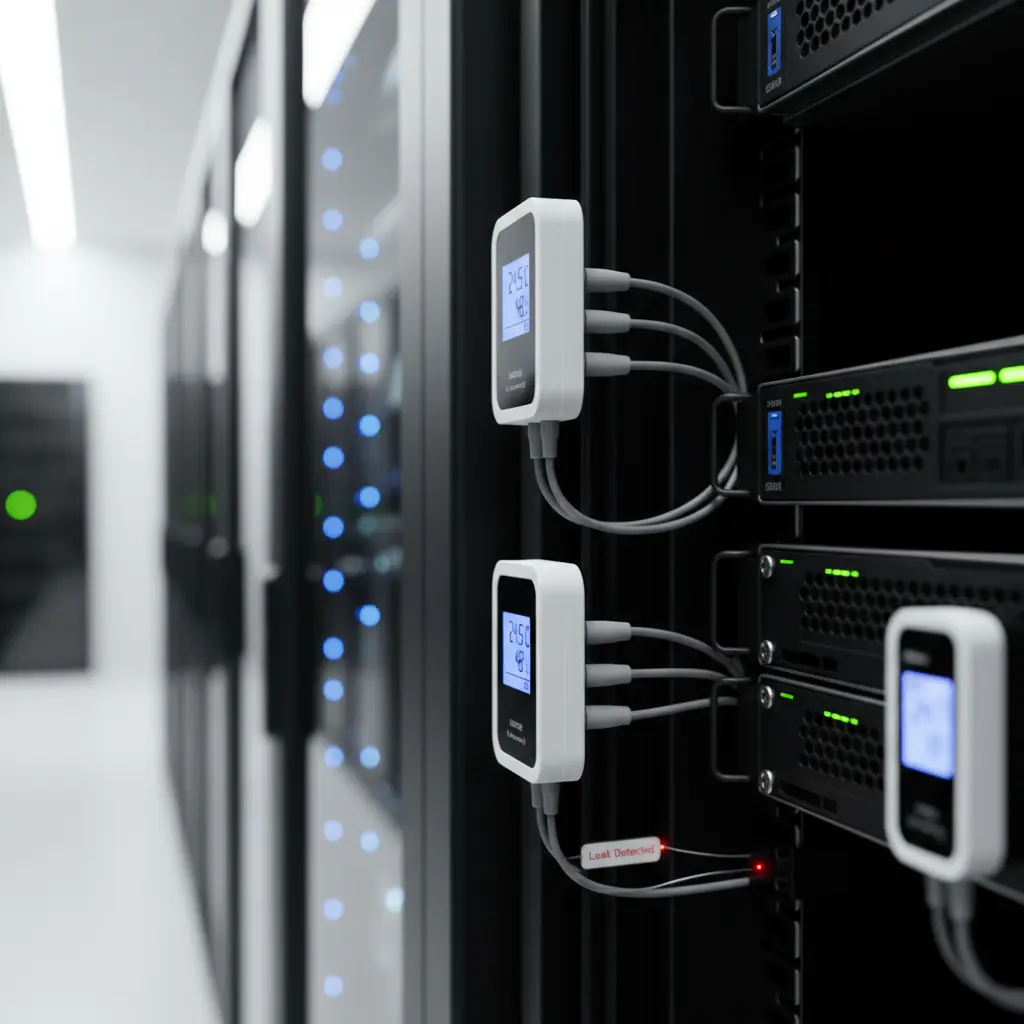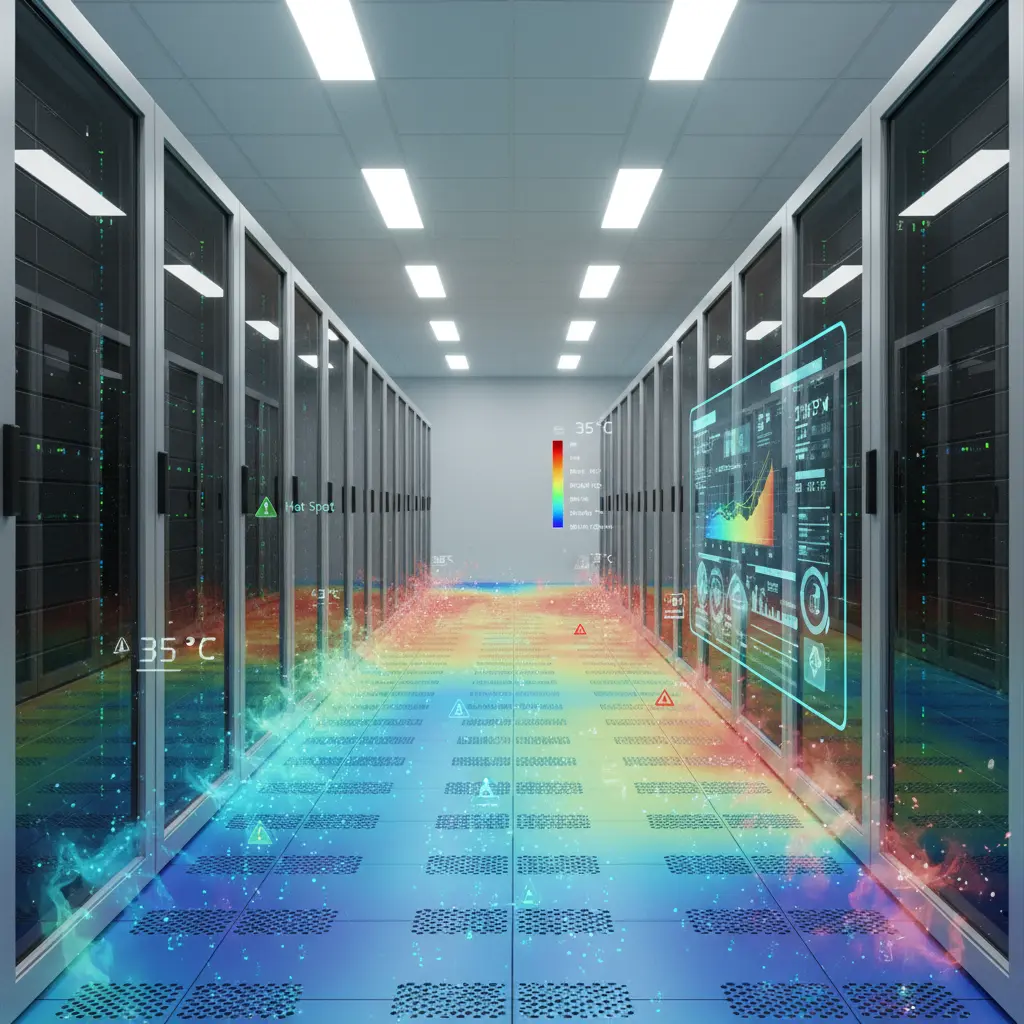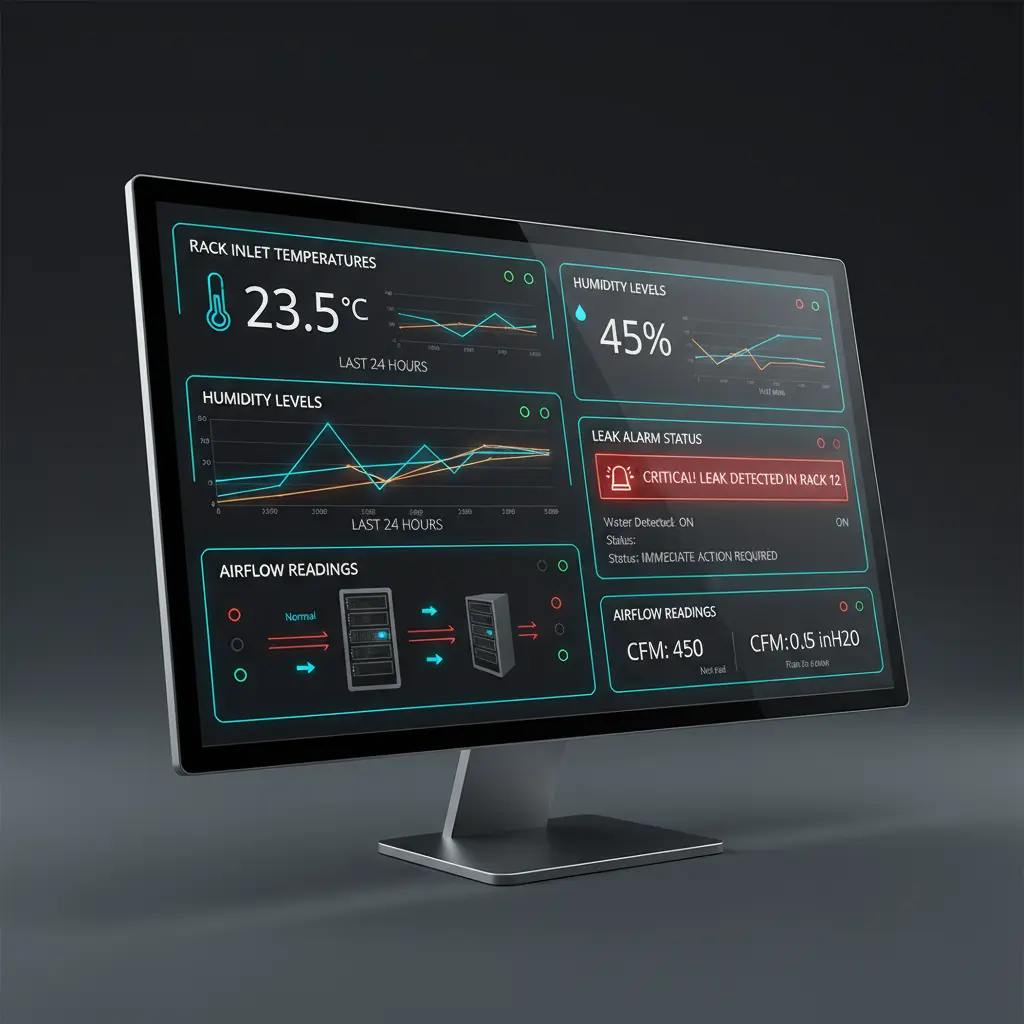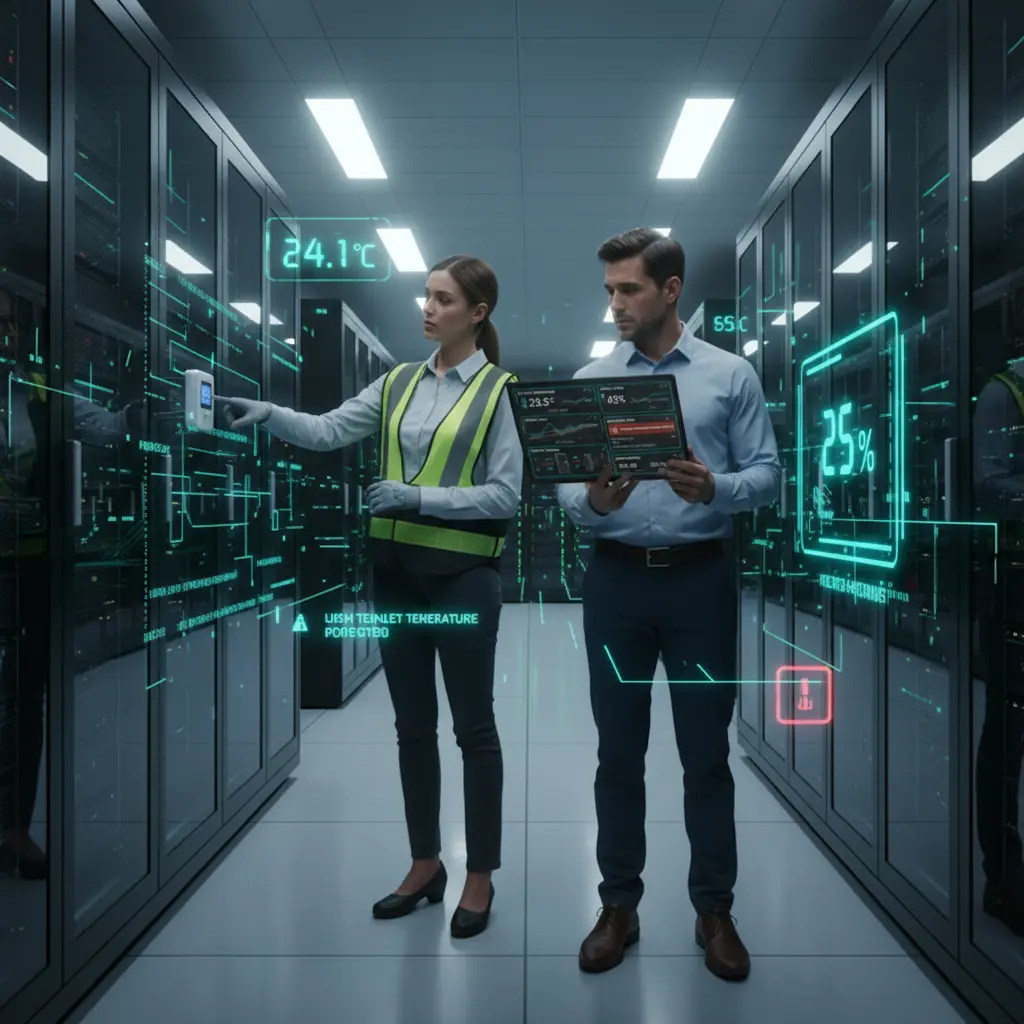Introduction
If you run a data center without keeping an eye on the environment, it’s like flying a plane with your eyes closed—you won’t see trouble until it’s too late. Power problems, racks that get too hot, water leaks, or bad airflow could quickly stop systems that are critical to the mission.
That’s why keeping an eye on data center environmental monitoring is so important for modern IT resilience. IT leaders keep equipment safe, avoid expensive downtime, and follow industry standards by keeping an eye on temperature, humidity, airflow, and leaks in real time.
We’ll cover everything you need to know about environmental monitoring in this guide, including what it is, what sensors you should use, best practices, and how it relates to more specific topics like server room temperature monitoring.
What is Data Center Environmental Monitoring?
Data center environmental monitoring is the ongoing observation of the physical conditions inside a building to make sure that IT hardware works as well as it can. This includes keeping an eye on:
- Temperature: Keeping things from getting too hot and avoiding hot spots.
- Humidity: Keeping condensation and damage from electrostatic discharge at bay.
- Airflow: Making sure that the heat is evenly distributed so it doesn’t get stuck.
- Finding leaks: spotting water from cooling units or water that has seeped through the floor.
- Vibrations/Noise: Finding problems with how equipment works.
Think of it as giving your data center an internal nervous system. Sensors act like “nerve endings,” sending information about changes to a central dashboard right away.
Why Data center environmental monitoring Matters
Time off work costs a lot. The Uptime Institute says that the average cost of an outage is now more than $100,000, and a large number of outages cost more than $1 million.
Here are some reasons why data center environmental monitoring is so important:
- Preventative Protection: Stops servers from failing by stopping overheating or leaks.
- Efficient Energy Use: Improves PUE (Power Usage Effectiveness) by optimizing cooling strategies.
- Compliance: Environmental reporting is required in many fields, such as finance, healthcare, and government.
- Long-Term Equipment Health: Data shows that servers last longer when they are used in stable environments.
You don’t have to do “visual walk-through inspections” every day anymore because of automated alerts.
Check out our article on Data Center Monitoring Systems to learn about more general solutions that go beyond environmental factors.

Key Elements of Data Center Environmental Monitoring
Temperature Monitoring
Servers make a lot of heat. Rack-level sensors make sure that no equipment goes over its limits. This is very similar to monitoring the temperature in the server room, which is one of the most important things to do.
Humidity Control
Keeping the relative humidity between 40% and 60% keeps static electricity from building up and causing problems with moisture. For standards, look at the ASHRAE thermal guidelines.
Airflow and Pressure
Monitoring makes sure that cold aisle/hot aisle containment strategies work and that airflow paths aren’t blocked.
Leak Detection
Early water leak detection under raised floors and around CRAC/CRAH units prevents disasters.
Power and Vibration Sensors
While not strictly “environmental,” many integrated platforms also flag abnormal vibrations from failing fans or power systems.

Benefits of Data center environmental monitoring
- Faster Response: Automated SMS and email alerts let you act right away.
- Energy Savings: Fine-tuning the cooling system cuts down on wasted kWh.
- Less downtime: Stopping problems before they get worse stops them from getting worse.
- Capacity Planning: Sensor data from the past helps with upgrades in the future.
- Sustainability: Goals for reducing carbon emissions are supported by improved energy efficiency.
For more information, you can always read out our detailed article on Modern Data Center Monitoring Systems, which explains how these benefits integrate across IT + facilities.
Tools and Systems for Data center environmental monitoring
- Standalone Rack Sensors: Entry-level standalone rack sensors that keep an eye on specific racks.
- Wired & Wireless IoT Sensors: Wired and wireless IoT sensors can be used to monitor temperature and humidity across the entire floor.
- Leak Detection Cables: Leak detection cables are put under floors that are raised.
- DCIM Software: Full platforms that combine the environment and IT are called DCIM software.
Look at companies like Schneider Electric EcoStruxure for examples of DCIM-integrated environmental monitoring.

Best Practices for Data Center Environmental Monitoring
- Follow the ASHRAE rules: Keep the temperature between 18°C and 27°C and the humidity at the right level.
- Deploy Redundant Sensors: Use extra sensors to make sure you get backup readings and avoid false negatives.
- Position Sensors Strategically: Top, middle, and bottom of racks; cold aisle vs hot aisle.
- Set up alerts to run automatically; don’t check your dashboard by hand.
- Connect with larger systems: For full visibility, combine with your main data center monitoring system.
click here to read the article on best practices for monitoring the environment in a data center.

Challenges and Future of Data center environmental monitoring
- Alert Fatigue: When there are too many alerts, teams don’t pay attention to the important ones. AI/ML helps you decide what’s most important.
Hybrid Complexity: It’s still hard to integrate on-prem and cloud monitoring.
Sustainability Goals: Look for changes toward carbon accountability and green IT. - Edge Data Centers: As edge grows, it becomes more important to keep an eye on lightweight monitoring at many locations.
Conclusion
Data center environmental monitoring is not an option; it is what keeps the center running, reliable, and efficient.
IT leaders can make sure their infrastructure stays stable, save money, and protect their investments by using strong sensors to monitor temperature, humidity, leaks, and airflow.
And since thermal health is such an important sub-topic, you should have our in-depth solution on Server Room Temperature Monitoring to see how temperature management fits into the bigger picture of keeping the environment stable.

